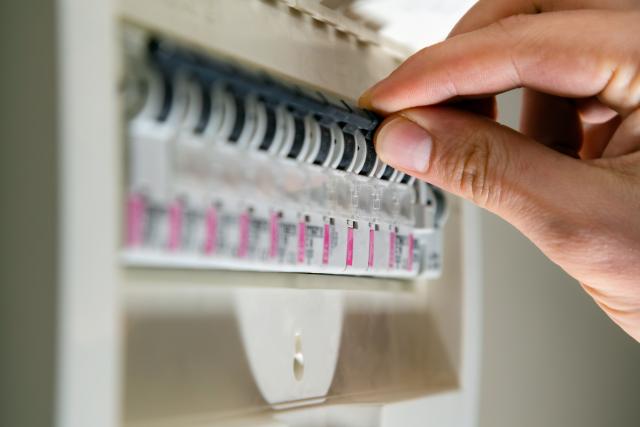Recent reports have revealed that the world’s carbon sinks are on the decline, meaning the natural capacity of Earth’s nature to absorb human emissions of carbon dioxide (CO2) has been severely reduced in 2023, as compared to previous years.
A recent article by The Guardian, citing statistics and findings from a team of international researchers from China and Europe stated that in 2023, the global land carbon sink absorbed an estimated 0.44 billion tonnes or gigatonnes of carbon per year (GtC).
Though this figure could vary by up to 0.21 billion tonnes, it pales in comparison to figures from 2010 to 2022, which was 2.04 billion tonnes per year.
The article was both praised and critiqued by the United States-based not-for-profit organisation Conservation Natural, where scientists Will Turner and Bronson Griscom highlighted the truths of the carbon sinks’ failing to absorb CO2, but emphasised that nature is still going through the due process but at a smaller scale.
From the Berwick campus, a Federation University Bachelor of Environmental and Conservation Science student, Belinda McPhee was involved in a pilot project earlier in the year, one that saw her and her peers plant varied native plants throughout different local councils to see how they respond to climate changes in their locations and help local flora adapt.
“Really, working ecosystems store the most carbon, so we need to make sure that we keep our ecosystems healthy over the long term,” she said.
According to McPhee, keeping nature strong and healthy is the best way to combat climate change, acknowledging the decline of nature’s carbon sinks as dire, and the strengthening of natural avenues as key to balancing the scales.
“I know there have been studies done, or meta-analysis done in the past that have shown we can’t plant our way out of the carbon crisis, there is not enough land on Earth to plant enough trees to absorb it all, so we have to make other changes.
“We have to stop emitting so much, then, on the flip side is where projects like these are important; we know we’ve already changed the climate, there is no going back.
“In order to help humans survive that, we need the services that ecosystems provide, like shade and contributing to look after the water systems and more.”
The Guardian cited its sources from a pool of information contributed to by researchers from Tsinghua University in Beijing, China; the University of Exeter, UK; Leipzig University, Talstr, Germany; University Paris-Saclay, Gif sur Yvette, France; and Microsoft Research, titled ‘low latency carbon budget analysis reveals a large decline of the land carbon sink in 2023’.
Frankly speaking, nature’s capabilities to shoulder the burden of climate change are faltering, with human-induced greenhouse gas emissions, factors such as deforestation, burning of fossil fuels, and industrial and agricultural activities being the primary drivers behind the environmental factors playing a hand in weakening the carbon sinks.
Another critique by both Conservation Natural scientists was that there was a missed opportunity to highlight the swathes of instances around the globe where restoration efforts and effective ecosystems have been performing well and that if continued, it may not be as grim as things seem.
With both Conservation Natural scientists calling for natural climate solutions, McPhee and her peers saw good progress in the first three-month interval of their project, with a 94.3 per cent survival rate across the five sites from the Greater Dandenong Council, Knox City Council and Maroondah City Council.
The project’s plants, where some originated from Warrandyte and in cooler climate areas such as Inverloch “is not affecting their ability to establish”.
“We have used five locally indigenous plant species from what we call four provenances, [which] are worked out on the projections of what the climate is going to be at 2050 and 2090.
“In this case, we’ve used a cooler and wetter provenance because the future climate in Victoria and Melbourne is expected to have more intense rainfall.
“The idea of sourcing plants in this way is to help local plants by intermingling with these other provenances, adapt to those climate conditions more quickly, because plants evolve over time and with human-induced climate change we’re pushing them faster than some of them can go.”
The international report stated that extreme climate conditions from record high temperatures to drought had severe impacts on nature’s ability to absorb CO2, where droughts in the Amazon resulted in carbon losses of 0.31 billion tonnes (varying by up to 0.19 billion tonnes), and wildfires in Canada contributed to emissions of 0.58 billion tonnes (varying by up to 0.10 billion tonnes).
The Mauna Loa Observatory in Hawaii, which serves as the longest-running site for measuring atmospheric carbon dioxide concentrations, recorded a CO2 growth rate of 3.37 billion tonnes (varying by up to 0.11 billion tonnes) in 2023, which is 86 per cent higher than recorded in 2022, and also the highest growth rate since measurements began in 1958.
Overall care for the environment and the natural ecosystem is a must according to Conservation Natural and McPhee, where support for the people in the context of CO2 absorption to fostering life and other life forms that rely on these environments are the key factors needed to mitigate climate change’s impact.
“Where this project fits in is we say, okay, these are the ecosystems that we’re working to restore because they help with mitigation, they help people feel good, they help with the ecosystem that they are in.
“Water, air quality, even health and well-being, we all know how much better we feel once we go outside for a walk and look at the greenery.
“We also need to think about, particularly Australia, how big of influence we’ve had on the ecosystems and the species here; we have one of the highest levels of threatened species in the world, and we need to be looking after our natural capital, it’s all we’ve got,” McPhee said.







